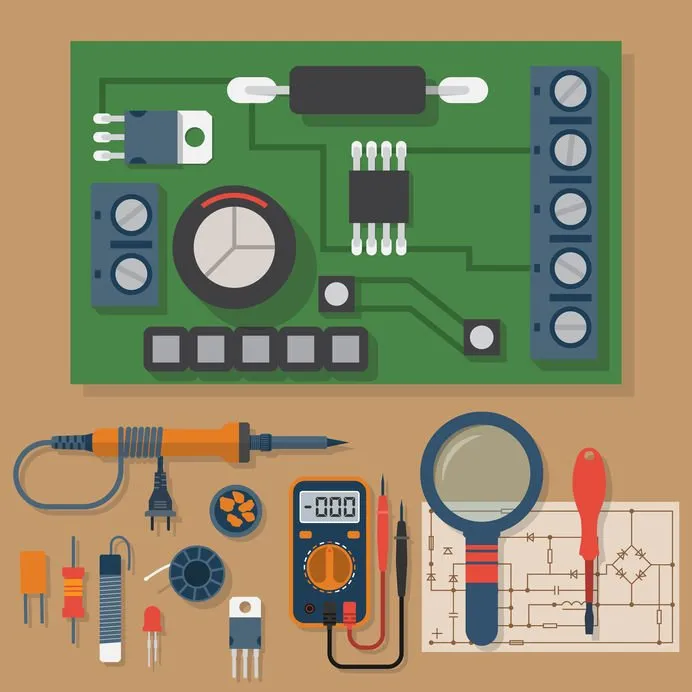Practical fun with electronics
Practical fun with electronics
Welcome to the world of electronics
We live in a high-tech world surrounded by electronic products and devices and our homes are full of gadgets and control systems.
Our aim
Young children can benefit greatly from learning about electronics. Understanding what components do and how they work and interact with each other, how to read circuit diagrams, solder and build circuits will develop unique skills and an understanding of the digital world in which we live.
Our aim is to make the world of electronics accessible, fun and inspirational. It is a matter of finding somewhere to start and there is no better place than here, so read on.
Classes
Our sessions aim to inspire, promote confidence and provide opportunities to create and succeed. We offer a wide range of activities covering basic electronic components, concepts and building blocks touching upon electronic theory with a practical task each session. Each session has been carefully planned with specific objectives and a practical outcome to take home and keep along with a journal. Each block of sessions is limited to a maximum of 6 children. Each child will have their own set of tools and equipment to use during the session. Each of the six sessions will run for 90 minutes and the children will be awarded a certificate on completion of all six sessions.
This block of six sessions costs £150 inclusive of all materials.
6 week program
Week 1
In this first session, basic components including a 9V battery, LED’s and resistors are introduced and are used to build a simple circuit following a circuit diagram. The children then move on to learn how to solder safely and they make a simple 9V battery tester.
Week 2
The second week builds on earlier concepts and introduces several different switches along with a small motor. Coin cells are discussed as an alternative, smaller power supply. All of this is combined to make of a small vibrating bug.
Week 3
A small solar panel is used to charge up a rechargeable battery to make a 'Solar Garden Light'. During the day the solar panel charges the AA battery and at night when it goes dark, the bright LED is illuminated, lighting up the garden.
Week 4
A transistor is introduced as an electrical switch alongside a phototransistor, a small component capable of detecting changes in light levels. These components are combined to make a small, colour changing night light that will sooth you as you go to sleep each night.
Week 5
The ability to control time is a valuable building block in electronics. By combining a variable resistor and capacitor we can create and control time delays. A bigger motor this week is connected to a fan results in the manufacture of an air freshener.
Week 6
In this final session an amplifier is introduced. When coupled with a speaker, a mono amplifier is produced which can be connected via a standard 3.5mm jack to most mobile phones or a laptop. This mono amplifier can produce an output of 1W.
Check out the dates of our upcoming sessions
We run most sessions after school during term time with some sessions on a Saturday morning.
There are also a number of half day and full day sessions during school holidays.







